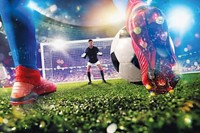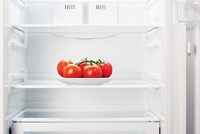Advertisement
Grab your lab coat. Let's get started
Welcome!
Welcome!
Create an account below to get 6 C&EN articles per month, receive newsletters and more - all free.
It seems this is your first time logging in online. Please enter the following information to continue.
As an ACS member you automatically get access to this site. All we need is few more details to create your reading experience.
Not you? Sign in with a different account.
Not you? Sign in with a different account.
ERROR 1
ERROR 1
ERROR 2
ERROR 2
ERROR 2
ERROR 2
ERROR 2
Password and Confirm password must match.
If you have an ACS member number, please enter it here so we can link this account to your membership. (optional)
ERROR 2
ACS values your privacy. By submitting your information, you are gaining access to C&EN and subscribing to our weekly newsletter. We use the information you provide to make your reading experience better, and we will never sell your data to third party members.
Education
Newscripts
Counterfeit Kopi Luwak, Balanced Decisions
by Craig Bettenhausen
September 30, 2013
| A version of this story appeared in
Volume 91, Issue 39

Kopi luwak costs about $300 per lb, which many would consider a steep price for coffee beans that were picked out of the feces of a small forest cat. The high price tag and the challenges of harvesting the special beans create a motive for unscrupulous producers to pass off regular coffee beans as kopi luwak. In fact, some coffee industry watchers estimate that up to 80% of kopi luwak sold on the global market is fake.
But coffee counterfeiters may have met their match in Eiichiro Fukusaki of Japan’s Osaka University. Fukusaki used gas chromatography/mass spectrometry to distinguish the chemical fingerprint of kopi luwak from that of regular coffee beans (J. Agric. Food Chem. 2013, DOI: 10.1021/jf401819s). The approach is part of a growing subfield called metabolomics, which analyzes the products left behind by metabolic processes as a way to study intact organisms.
Responsible for kopi luwak is the Asian palm civet, an omnivorous feline found in southern Asia. Fruits and berries make up the bulk of its diet, including the berry of the coffee plant. In general, “coffee processing requires the removal of the fruit, typically through a light fermentation, and then a washdown or drying and agitation,” explains Phil Broughton of specialty coffee products maker Funranium Labs. “The intestinal tract of a civet is another way to achieve the same goal.”
Kopi luwak fans think the coffee is worth the high price and posit that the civets choose to eat only the best coffee berries, which in turn contain beans with superior flavor. In addition, “the digestive juices and intestinal flora do some alteration of the beans,” Broughton says, adding that kopi luwak is mild in flavor compared with other coffees. Coffee flavor is definitely an area of tasters’ choice, and Broughton says he prefers the flavor of a conventional light roast.
To fingerprint the kopi luwak, Fukusaki and his team used GC/MS to identify and quantify 26 chemicals as possible discriminant markers among different types of coffee samples. Then they applied statistical methods to pick the best chemical markers for kopi luwak verification: citric acid, malic acid, and the ratio between inositol and pyroglutamic acid. The method is so accurate, it can even correctly identify a sample as a 50:50 mixture of kopi luwak and regular coffee.
You may be less inclined to buy super premium coffee if you’re wearing high heels, suggest Jeffrey S. Larson and Darron M. Billeter of Brigham Young University. And you might also skip the free day-old coffee in the auto mechanic’s waiting room. In an article the pair recently published in the Journal of Marketing Research, volunteers who engaged in activities that stimulated their sense of physical balance made choices that were figuratively more balanced (2013, DOI: 10.1509/jmr.11.0455).

Participants leaned back in their chairs, played a yoga video game, or stood on one foot while choosing among three cars on the basis of performance data—one with fast acceleration but low top speed, one with slow acceleration but high top speed, and one with intermediate values for both. Relative to control groups sitting politely, playing a jogging video game, or standing normally, they were significantly more likely to choose the compromise car. Similar experiments choosing among printers and computers yielded comparable results.
The findings add to a growing body of research suggesting that abstract judgments and decisions can be strongly influenced by physical experiences. The Newscripts gang is already making levelheaded plans to resolve any editor-writer disagreements around the office while astride unicycles.
Craig Bettenhausen wrote this week’s column. Please send comments and suggestions to newscripts@acs.org.





Join the conversation
Contact the reporter
Submit a Letter to the Editor for publication
Engage with us on Twitter